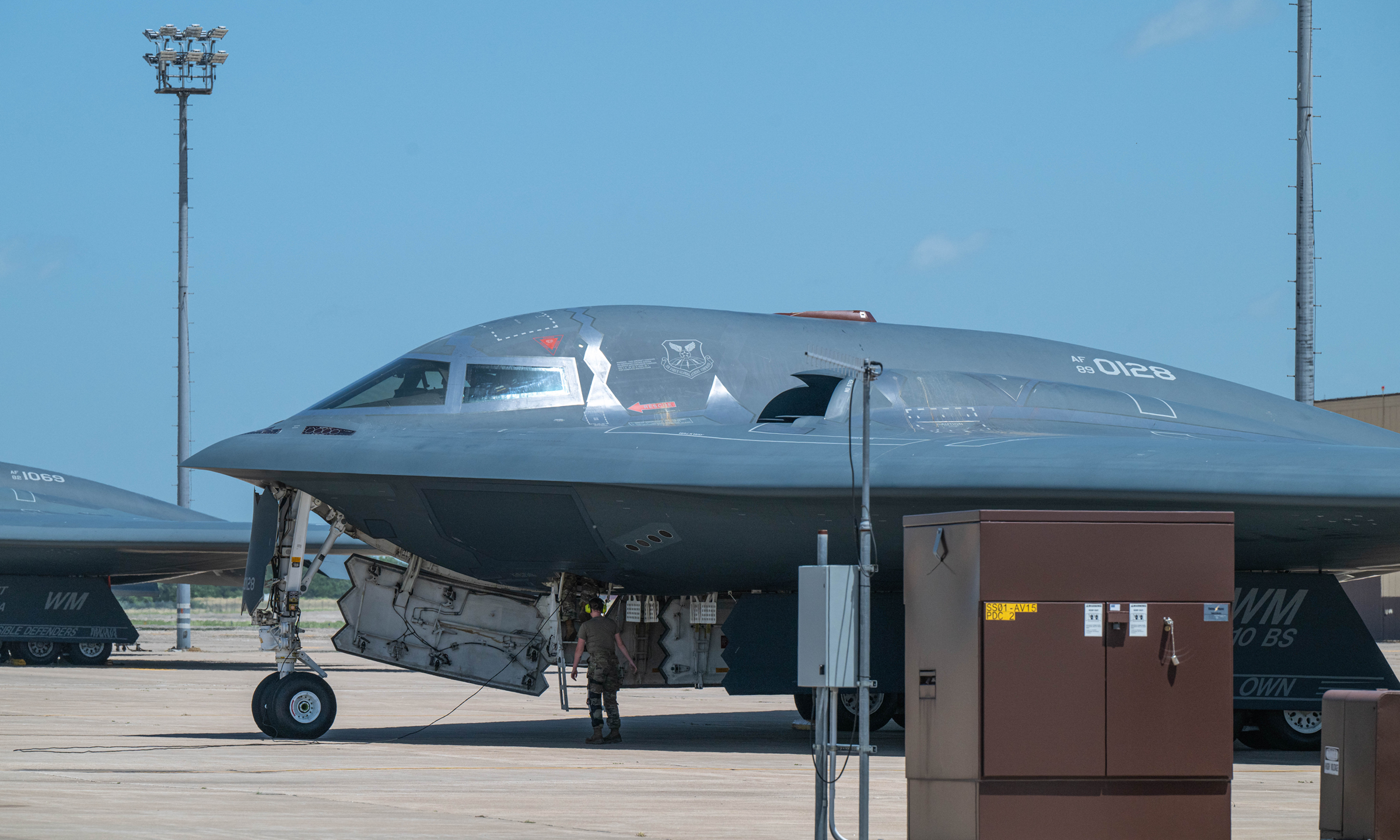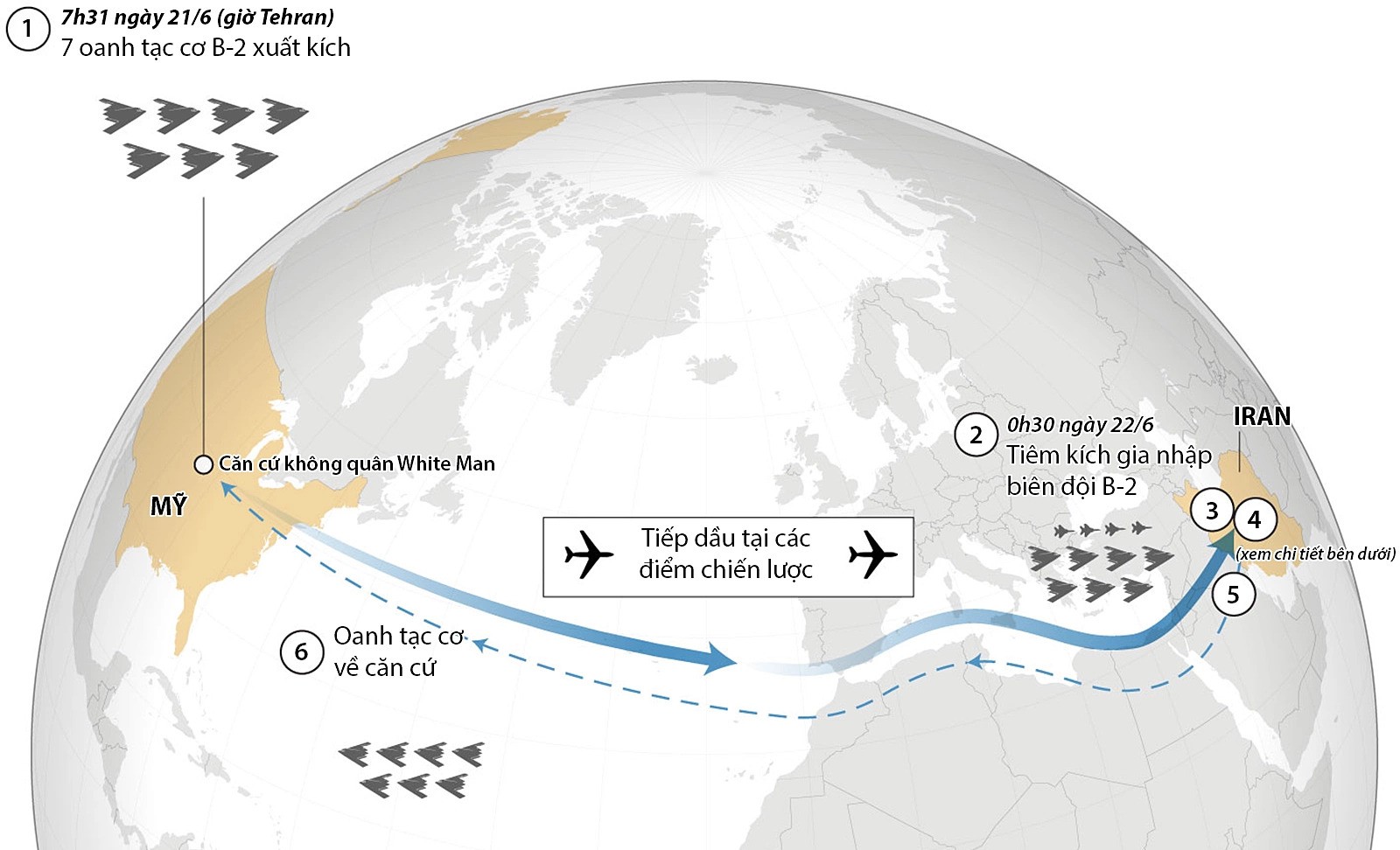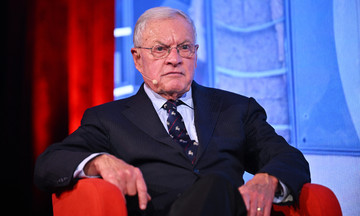At dawn on 22/6, the US military launched Operation Night Hammer, mobilizing about 125 aircraft of various types, including 7 B-2 stealth bombers, over 50 refueling tankers, and numerous fighter jets and reconnaissance aircraft. The targets were 3 key Iranian nuclear facilities, with the B-2 squadron's primary objective being the Fordow uranium enrichment plant located deep inside a mountain.
"We did not detect any projectiles aimed at the US aircraft formation during entry into and exit from Iranian airspace. Their fighters did not take off, and it seems their air defense systems did not see the US forces. We maintained the element of surprise throughout the mission," US Joint Chiefs of Staff Chairman Dan Caine said in a report on the operation.
Military experts believe there are several reasons why US forces could operate so easily in Iranian airspace.
 |
B-2 bombers at Whiteman Air Force Base, Missouri, after the Iran airstrike on 22/6. Photo: USAF |
B-2 bombers at Whiteman Air Force Base, Missouri, after the Iran airstrike on 22/6. Photo: USAF
"The B-2 bomber has a special design that makes it almost completely invisible to enemy radar. This aircraft is very difficult for enemy air defense systems to detect, especially when it does not use radio communication and flies at low altitudes," said Chris Panella, editor of Business Insider.
This bomber uses a flying wing design with many angles, a seamless outer shell without the joints of traditional aircraft, radar-absorbing material coating, and other technologies to minimize its radar signature.
The actual radar cross-section of the B-2 has never been released, but experts believe it is equivalent to a bird. "To radar operators, the B-2's reflection does not resemble a strategic bomber with a wingspan of over 52 m," Panella added.
Another reason is that Iran's air defense network had suffered heavy damage due to the conflict with Israel during the preceding 10 days. Many of Iran's modern missile systems and early warning radars were destroyed in the Israeli preemptive strike at dawn on 13/6, and numerous air defense complexes were also hit in the following days.
On 16/6, the Israeli military declared it had "achieved complete air superiority" in several areas of Iran, including the capital Tehran.
 |
Iran's Fordow nuclear facility after the US airstrike on 22/6. Photo: Maxar |
Iran's Fordow nuclear facility after the US airstrike on 22/6. Photo: Maxar
The Pentagon said that while the B-2 bombers were heading towards the Iranian nuclear facility, escort fighters flew ahead to search for enemy fighter jets and air defense systems. "The escort team used high-speed suppression weapons to ensure the safety of the strike force. The fighters launched preemptive strikes against potential Iranian air defense threats," General Caine said.
The Chairman of the US Joint Chiefs of Staff did not specify the equipment used but seemed to be referring to the AGM-88 anti-radiation missile. This implies that US fighters may have proactively attacked Iranian air defense sites on their way to the nuclear facility, preventing them from targeting the B-2 squadron.
"The mountainous terrain surrounding the Fordow and Natanz facilities also created blind spots for ground-based radar. The US also deliberately conducted the operation in the middle of the night to hinder Iranian defense forces," Panella noted.
US Secretary of Defense Pete Hegseth declared Operation Night Hammer took the world by surprise.
To achieve this, Washington employed diversionary tactics before its forces entered enemy airspace. The US action began when President Donald Trump set a two-week deadline to decide whether to attack Iran, implying that the operation would not take place in the near future. In reality, the attack occurred just a few days later.
A squadron of B-2s flew west, across the Pacific Ocean, towards Guam as a diversion. Meanwhile, the real attack force, consisting of 7 B-2s, flew east and penetrated Iranian airspace, bombing the Fordow and Natanz nuclear facilities.
General Caine said that only a few key leaders in Washington, D.C. and Central Command, the unit responsible for US military operations in the Middle East, knew about this move to ensure surprise.
 |
The flight path of the B-2 bombers that attacked Iran. Click on the image for details. |
The US Air Force currently operates 18 B-2 aircraft, but usually only 11-12 are combat-ready, with the rest undergoing maintenance.
With 7 B-2 bombers participating in the airstrike and an unspecified number of aircraft used for diversion, Night Hammer was the largest operation in the history of this aircraft type. The bombers dropped 14 GBU-57 bunker-buster bombs on the Fordow and Natanz nuclear facilities in Iran. A US submarine in the Middle East also fired over 24 Tomahawk cruise missiles at the Isfahan complex.
President Trump described Operation Night Hammer as a major success, but the actual impact on Iran's nuclear program remains a big question. Washington has not been able to determine the status of Tehran's key nuclear technologies and enriched uranium stockpile. Most of Iran's nuclear scientists appear to have been evacuated before the airstrike.
US and Israeli officials have repeatedly asserted in recent days that the attack dealt a heavy blow to Iran's nuclear program, with some suggesting that Tehran's "nuclear bomb-making plan" would be delayed by at least several years. However, US media cited preliminary reports from US intelligence suggesting that Operation Night Hammer only set back Iran's nuclear program by a few months.
Pham Giang (According to Business Insider, Reuters, AFP)












